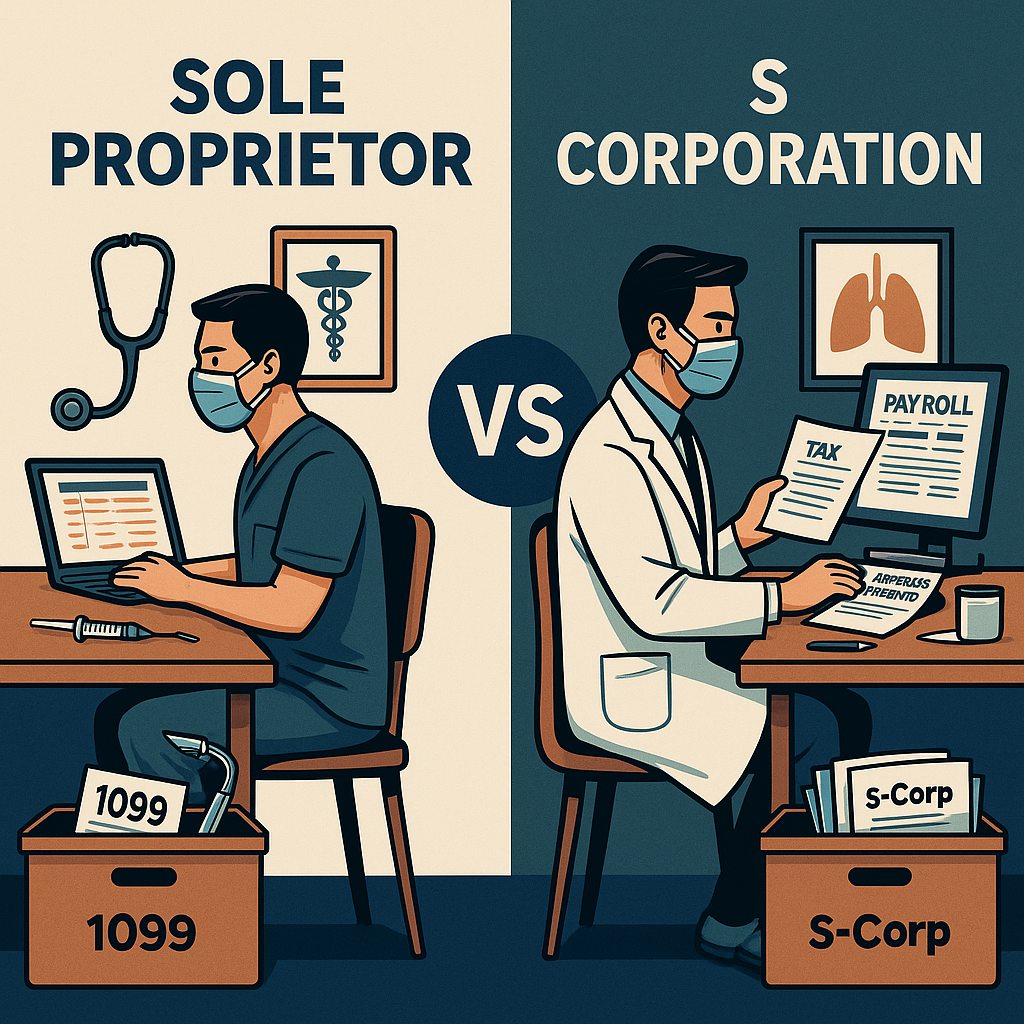For CRNAs stepping into the world of 1099 employment, the decision between operating as a sole proprietor or an S Corporation can be pivotal. This choice not only shapes your tax responsibilities but also influences your financial trajectory. Let’s unravel this complex topic with some in-depth case studies.
Decoding the Tax Structures
Before we delve into the case studies, it’s crucial to understand the fundamentals of the two structures:
- Sole Proprietorship: This structure is straightforward – your business income and expenses are part of your personal tax returns. The simplicity comes with a cost: higher self-employment taxes since you’re responsible for both the employee and employer portions of Social Security and Medicare taxes.
- S Corporation: Opting for an S Corp can potentially reduce your tax liability. You draw a reasonable salary (subject to employment taxes), and the remaining business income is distributed as dividends, which aren’t subject to self-employment taxes. However, this comes with the complexity of payroll processing and additional compliance requirements.
Before making a quick decision as to how you’d like your LLC to be taxed, let’s unpack two quick case studies to better illustrate why there isn’t a cut-and-dry answer.
Expanding on the Case Studies (view video above for more in-depth details)

Ann Esthesia
Ann, expects to earn $275,000 with $20,000 in business expenses, and $23,000 in retirement plan contributions. Her scenario as a sole proprietor shows a straightforward calculation of net income and taxes, including self-employment taxes of around $28,000. However, as an S Corporation, Ann decides to set her salary at $100,000, with the remaining income treated as business profit. While her overall tax burden is slightly less in the S-Corp scenario, the added responsibilities and costs (like payroll processing and state-specific taxes) make the decision not just about the bottom line but also about administrative ease.

Nora Nephrine
Nora is earning $325,000. She is focused on maximizing her retirement contributions. As a sole proprietor, Nora can contribute more to her retirement plan pre-tax, leading to a significant reduction in taxable income – up to $69,000 in ‘24. On the other hand, her S Corporation structure limits her retirement contributions due to the salary cap, resulting in higher taxable income, lower QBI, and, thus, higher taxes. This case underscores the critical role of retirement planning in choosing between a sole proprietorship and an S Corporation.

Navigating Your 1099 Employment Journey
- Personalized Tax Strategy: Everyone’s situation is unique. It’s important to analyze your personal income, expenses, and long-term goals when choosing your business structure.
- Consider Professional Advice: Tax laws and regulations can be intricate. Seeking advice from tax professionals, especially those with experience in healthcare sector taxation, is invaluable.
- Stay Informed and Flexible: Tax structures and benefits can evolve. Stay updated and be open to revising your strategy as your career and personal circumstances change.

